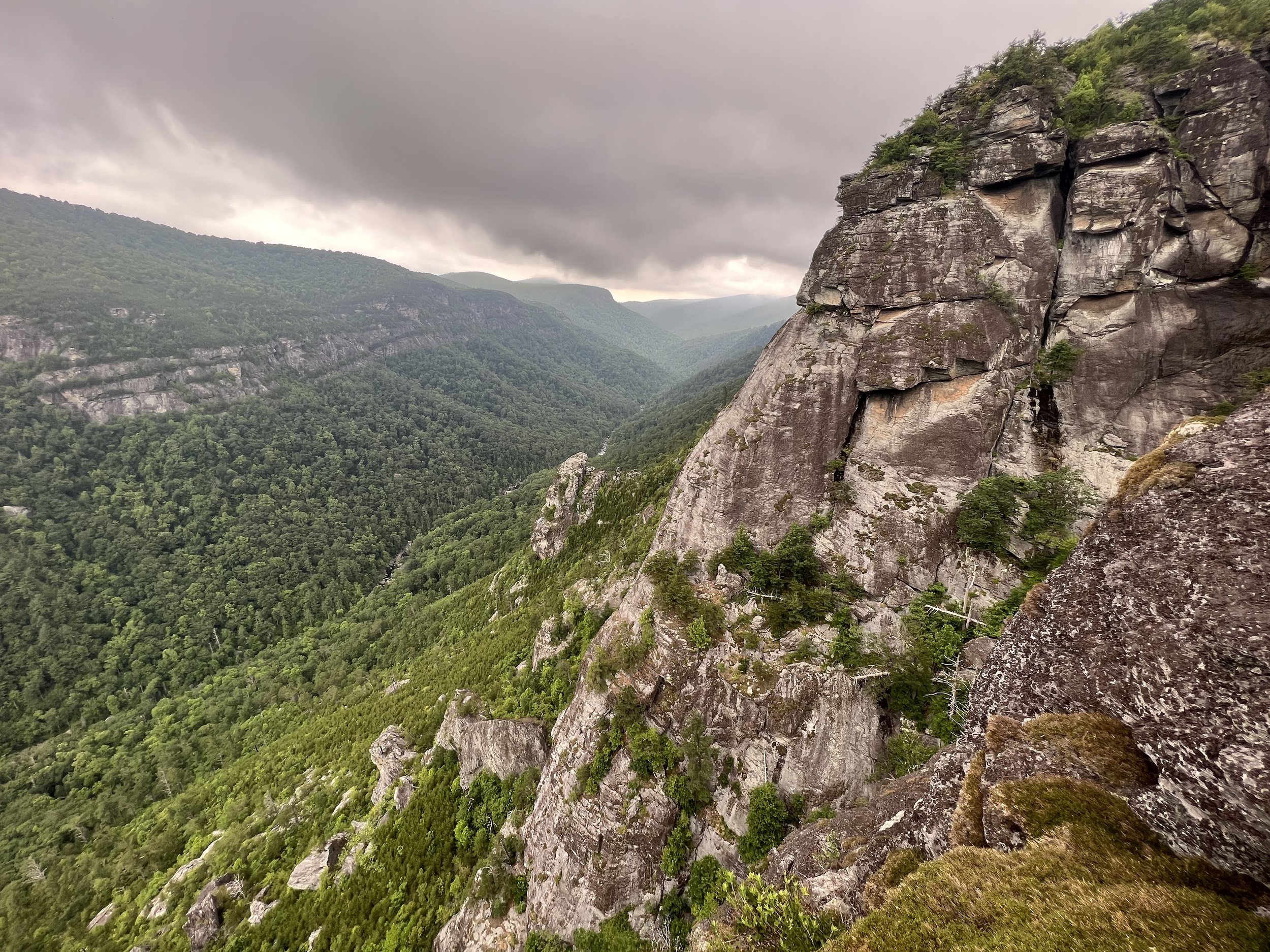
about us
Appalachian Climbing School was founded by a simple premise: the environment, the culture, and the diversity of climbing in and around the Appalachian Mountains are and should always be a treasure for the whole world.
As a young climber, taking my first trips to Stone Mountain, Shortoff, and Crowder’s Mountain, I did not have the frame of reference to understand how truly lucky I was to learn to be a climber here. Now, having traveled all over the country, taught climbers on Northwestern Volcanos to desert towers in the Southwest to the frozen faces of New England, I know this place is special. It’s not only special to me because it’s my home; it’s special because it is the best place in the whole world to become a climber. Learning to climb here will best prepare a climber to go learn to climb everywhere else, and the inverse of that progression cannot be found anywhere else in the world. The foundations that you build in the Appalachian mountains can evolve into the skills you need to climb anywhere in the world.
This is THE place to learn to climb. Here’s why:
The environment
We have predictable climbing seasons, and those seasons give us stable climbing months in the spring and fall, despite the variations of climate that affect the rest of the country so much more harshly. We will always have enough water in Appalachia, and that means we will always have some version of blooming color in the spring and blazing foliage in the fall. While summers and winters bring more precipitation and more extreme temperatures, even those months give us days to play, and we adapt to heat and the cold and the wet and the frozen with how we climb and where we climb. Our mountains are old, so our rock is of the highest quality. While El Capitan continues to slough off entire faces of granite, Laurel Knob and Linville Gorge boast an implacable permanence.
the culture
The culture here manages to transcend the conflicts that make life toilsome and weary. The sins of the past and the wrongs that people do to each other always ask a culture if it stands in the way of progress or helps us grow and heal as a people. Appalachian climbers, regardless of their differences in the broader world, appreciate that our climbing culture provides sanctuary. It unanimously invites any person to be a part of this, this culture and this place for as long as needed, until we have the strength and the patience to return to the broader world. How do we create a cultural oasis? In every place we climb, we find a common love for challenge and adventure. We find the teammates we need to embrace that common love, and we all feel an obligation to preserve this for ourselves and our posterity.
diversity of rock
The diversity of rock in Appalachian climbing attracts and sustains a diversity of characters. The mind-bending leads on Stone Mountain granite, the vein-bulging overhangs on Shortoff quartzite, the finger-wrenching meta-sandstone edges at Moore’s Wall, it’s all part of an endless diversity of rock. No place in this region is geologically the same as another place. The effects of time and weather and chemistry make each place special. So the people sort themselves out with the same wondrous variety. On any given weekend, some jungle hunters will want to crawl through rhododendron thickets to find a mythical crack on a forgotten cliff, while others will crave the frozen columns of seeps and streams. Some will build their courage through study and trial, while some will constantly carve away the reckless edges of their temerity. Everyone here is infatuated with something different about this place at different times and in different ways, and Appalachian climbing remarkably has room for them all. Most singularly, the region not only has room, but the diversity is one of our signature characteristics.
